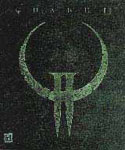 URCS
Quagents Home
URCS
Quagents Home | Warning! Many helper programs use the Quake 2 PAK file system in unusual ways. The main thing is to remember that the root directory of a PAK is the same as your Quake2/baseq2, and any subdirectories will be accessible in the same way. (For example, the equivalent to /models/monsters/driller would be c:\Quake2\baseq2\models\monsters\driller.) Some programs get confused if your files are not edited and saved with this structure in mind. |
else if(strstr(self->classname, "mutant")){
|
else if(strstr(self->classname, "driller")){
|
} name_dict[] = {
|
{"bot_driller", "driller"}
|
char *bot_list[] = {"bot_soldier", "bot_berserk", "bot_chick",
|
for(i=0;i<8;i++){
|
quagent_spawn_info driller_info={0,0,100,0,0,5000,1000.f,5.f,4000, {0,0,0}};
|
switch(quagent_spawns[current_quagent].type){
|
case DRILLER: |
berserk|BERSERK|Randal|randal {yyval.index=BERSERK; return BERSERK;}
|
driller|DRILLER|Driller {yyval.index=DRILLER; return DRILLER}
|
%token <index> BERSERK CHICK GLADIATOR GUNNER INFANTRY PARASITE SOLDIER |
%token <index> DRILLER |
quagent_type:BERSERK|CHICK|...|MUTANT; |
quagent_type:BERSERK|CHICK|...|MUTANT|DRILLER; |
quagent { type driller initiallocation 0 0 0 }
|
Last updated: by barnum